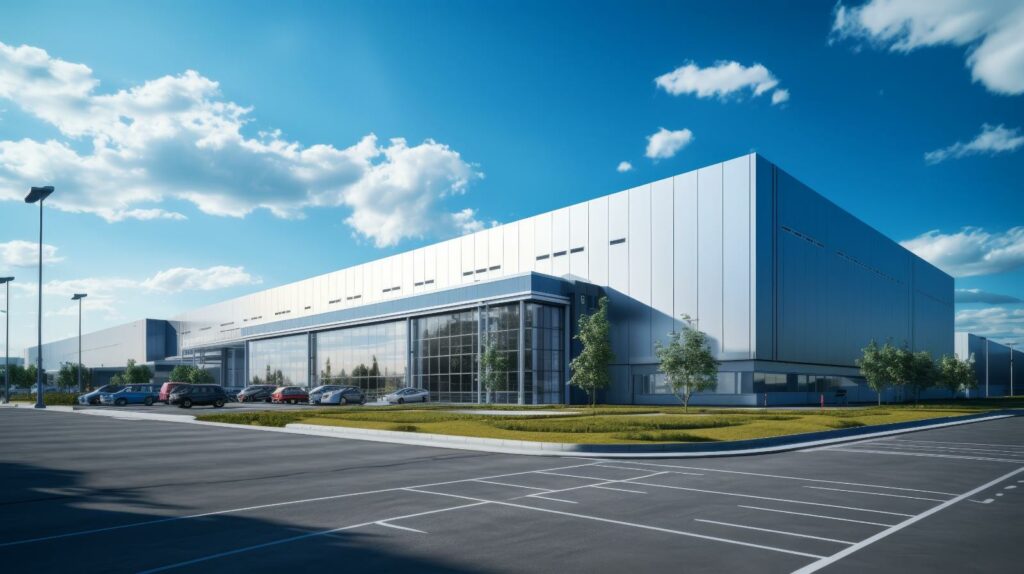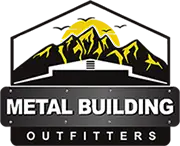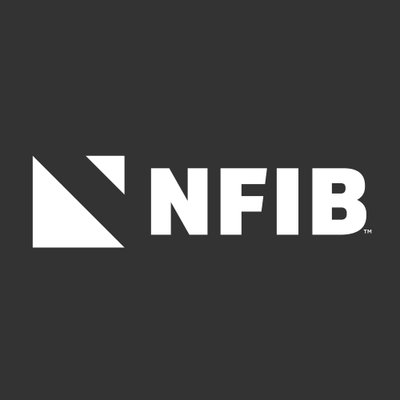
Contents
Have you ever wondered what simple steps could be taken to extend the lifespan of metal structures? Implementing practical maintenance techniques can have a substantial impact on the durability of such constructions. By understanding the importance of regular inspections and preventative measures, you can guarantee the structural integrity of metal buildings. But there’s more to uncover beyond these initial steps. Explore additional strategies that can help you effectively maintain metal structures for the long haul.
Key Takeaways
- Conduct annual structural inspections for early issue detection.
- Implement preventative coatings to protect against corrosion.
- Manage moisture ingress and ensure proper drainage systems.
- Utilize metal surface treatments like galvanization for corrosion control.
- Maintain proper ventilation to prevent harmful moisture buildup.
Regular Inspections
Regular inspections are essential for ensuring the structural integrity and longevity of metal structures. Inspection frequency is vital in identifying any potential issues before they escalate, ultimately saving time and money in the long run. To maintain the best condition of metal structures, regular inspections should be conducted at least annually, with more frequent checks in harsh environments or for critical structures.
During inspections, focus on corrosion prevention is paramount. Corrosion is one of the most common issues that can compromise the integrity of metal structures. By detecting early signs of corrosion through thorough inspections, appropriate measures can be taken to mitigate further damage. This includes checking for rust, pitting, or discoloration on the metal surface. Implementing a proactive approach to corrosion prevention can greatly extend the lifespan of metal structures.
Ensure that during inspections, all areas of the metal structure are thoroughly examined, including joints, seams, and connections where corrosion is more likely to occur. Pay close attention to areas exposed to moisture or chemicals, as these can accelerate the corrosion process. By adhering to a regular inspection schedule and prioritizing corrosion prevention measures, you can effectively maintain the longevity and structural integrity of metal structures.
Preventative Coatings
Implementing preventative coatings on metal structures is an essential step in safeguarding against corrosion and extending their service life. When it comes to protecting your metal structures, here are five important points to keep in mind:
Surface Preparation: Before applying any preventative coatings, make sure that the metal surface is thoroughly cleaned and free of any contaminants such as rust, grease, or dirt. Proper surface preparation is key to the effectiveness of the coating.
Selection of Coating: Choose a coating that’s specifically designed for the type of metal and the environmental conditions the structure will be exposed to. Different coatings offer varying levels of protection and durability.
Application Method: The method of applying the coating, whether it’s spraying, brushing, or dipping, can impact the coating’s performance. Follow the manufacturer’s instructions for the best results.
Maintenance Schedule: Regularly inspect the coated metal structure for any signs of wear or damage to the coating. Touch up or reapply the coating as needed to ensure continued protection.
Corrosion Resistance: Opt for coatings that have high corrosion resistance properties to provide long-term protection against rust and degradation. Investing in a quality coating now can save you time and money on future repairs.
Manage Moisture Exposure
To effectively manage moisture exposure in metal structures, careful consideration of environmental factors and strategic protective measures must be implemented. Moisture management is vital for rust prevention and overall corrosion control. Moisture can seep into metal structures through various avenues such as leaks, condensation, or high humidity levels. Implementing proper ventilation strategies can help mitigate moisture buildup within the structure, reducing the risk of corrosion.
| Moisture Management | Protective Measures |
|---|---|
| Identify sources of moisture ingress | Apply moisture-resistant coatings |
| Monitor humidity levels | Guarantee proper drainage systems |
| Conduct regular inspections | Utilize dehumidifiers where necessary |
Control Corrosion
Control corrosion by employing specialized coatings designed to create a protective barrier against environmental factors. When it comes to preserving metal structures, corrosion control methods are essential. Here are some key strategies to help you effectively manage corrosion and extend the lifespan of your metal assets:
Metal Surface Treatments: Utilize coatings like galvanization or metal plating to create a barrier that shields the metal from corrosive elements.
Corrosion Inhibitors: Incorporate chemicals that can be applied directly to the metal surface to prevent or slow down the corrosion process.
Regular Inspections: Conduct routine checks to identify any signs of corrosion early on and address them promptly.
Proper Drainage Systems: Make sure that water doesn’t accumulate near metal structures, as moisture is a significant contributor to corrosion.
Cathodic Protection: Implement methods like sacrificial anodes or impressed current systems to protect metal structures from corrosion by acting as a barrier.
Ensure Proper Ventilation
Maintain proper ventilation in metal structures to prevent corrosion effectively.
Adequate airflow plays a vital role in preserving the integrity of the metal by reducing moisture accumulation.
Proper ventilation helps in dissipating harmful gases and moisture that can lead to the deterioration of metal components.
Ventilation for Corrosion Prevention
For effective corrosion prevention in metal structures, proper ventilation plays a pivotal role in maintaining longevity and structural integrity. Adequate ventilation design is vital to guarantee ideal airflow and reduce the buildup of moisture and corrosive elements.
Here are five essential considerations for ventilation in corrosion prevention:
- Implementing strategic placement of vents to maximize air circulation.
- Utilizing fans or blowers to enhance airflow in enclosed spaces.
- Regularly inspect and clean ventilation systems to prevent blockages.
- Installing moisture-absorbing materials or dehumidifiers to reduce humidity levels.
- Monitoring ventilation efficiency through humidity and temperature sensors for timely adjustments.
Importance of Airflow
To optimize the longevity of metal structures, maintaining a steady airflow is essential in preventing corrosion and preserving structural integrity. Proper airflow optimization is vital as it helps in controlling moisture levels within the structure, reducing the risk of rust formation.
By ensuring adequate ventilation, you enable the dissipation of corrosive elements and minimize the chances of rust and decay. Ventilation benefits extend beyond corrosion prevention; it also aids in regulating temperature fluctuations that can impact the metal’s strength over time.
Effective airflow management enhances the durability of metal structures, making them more resistant to environmental factors. Remember, ensuring proper ventilation is a proactive measure that greatly contributes to the structural longevity of metal components.
Address Rust Promptly
When addressing rust promptly, you must utilize effective rust removal techniques such as mechanical abrasion or chemical treatments.
By promptly removing rust, you can prevent further corrosion from spreading and compromising the structural integrity of the metal.
Regular maintenance is important in promptly addressing rust to ensure metal structures’ longevity.
Rust Removal Techniques
Implementing abrasive blasting methods effectively removes rust from metal structures, ensuring their longevity and structural integrity. When it comes to rust removal techniques, here are some key points worth noting:
Mechanical Methods: Utilize wire brushes or sandpaper to manually scrub off rust.
Chemical Treatments: Apply rust converters or acidic solutions to dissolve rust from the surface.
Electrolysis: Use an electrolyte solution and a direct current to remove rust through electrolysis.
Power Tools: Employ power sanders or grinders for larger surface areas with stubborn rust.
Protective Coatings: After rust removal, apply anti-corrosion coatings to prevent future oxidation.
Preventing Future Corrosion
Properly addressing any signs of rust is essential to maintaining the longevity of metal structures and preventing future corrosion. Corrosion protection plays an important role in preventing the spread of rust on metal surfaces.
When you notice any rust formation, it’s important to act swiftly by removing the rust and applying a protective coating to prevent further corrosion. Proper surface preparation before applying any protective coating is necessary for long-term corrosion resistance.
Make sure that the surface is clean, dry, and free from any contaminants before applying the corrosion protection. By addressing rust promptly and following correct surface preparation procedures, you can effectively prevent future corrosion and prolong the lifespan of metal structures.
Importance of Maintenance
In order to maintain the longevity of metal structures, promptly addressing any signs of rust is crucial to prevent future corrosion. Rust can greatly weaken the structural integrity of the metal, leading to potential safety hazards and costly repairs. To guarantee the durability of metal structures, follow these maintenance guidelines:
- Regularly inspect metal surfaces for signs of rust or corrosion.
- Develop maintenance schedules to address rust promptly.
- Use corrosion control methods such as coatings or inhibitors.
- Plan for long-term structural durability through proactive maintenance.
- Seek professional assistance for extensive rust removal or repairs.
Clean Gutters Regularly
Regularly cleaning gutters is essential for maintaining the longevity of metal structures. Proper gutter maintenance plays an important role in preventing water damage, rust, and corrosion, which can compromise the structural integrity of the metal components. When gutters are clogged with debris such as leaves, twigs, and dirt, water can overflow and seep into the building’s foundation, leading to potential long-term issues.
To safeguard the longevity of metal structures, it’s imperative to schedule routine gutter cleanings. Debris removal from gutters not only prevents water buildup but also safeguards against the added weight that can strain the gutter system and the metal structure it’s attached to. This maintenance task is particularly crucial in regions prone to heavy rainfall or where trees shed leaves regularly.
Regularly inspecting and cleaning gutters also contributes to maintaining the overall structural strength of the metal components. By allowing proper water drainage, clean gutters help prevent standing water, which can gradually weaken metal surfaces through prolonged exposure to moisture. Additionally, keeping gutters clear reduces the risk of ice dams forming during colder seasons, further protecting the metal structure from potential damage.
Monitor Structural Integrity
Maintain consistent structural integrity by conducting regular inspections and assessments of metal components. Ensuring that your metal structures remain in peak condition requires diligent monitoring and proactive measures. Here are some key steps to effectively monitor the structural integrity of your metal components:
Implement Routine Structural Monitoring: Regularly inspect all metal elements for signs of wear, corrosion, or damage.
Utilize Non-Destructive Testing Techniques: Employ advanced methods like ultrasonic testing or magnetic particle inspection to assess the integrity of metal structures without causing harm.
Analyze Environmental Impact: Consider the impact of environmental factors such as temperature, humidity, and exposure to chemicals on the structural integrity of metal components.
Maintain Detailed Records: Keep thorough records of all inspections, assessments, and maintenance activities to track the condition of your metal structures over time.
Engage Professional Inspectors: Periodically involve qualified professionals to conduct thorough integrity assessments and provide expert recommendations for maintenance and repairs.
Regular structural monitoring and integrity assessments are essential to prolonging the lifespan of your metal structures and ensuring their continued safety and reliability. By staying vigilant and proactive in monitoring the condition of your metal components, you can address potential issues promptly and maintain the longevity of your structures for years to come.
Implement Pest Control Measures
To safeguard the longevity of your metal structures, it’s essential to address potential threats posed by pests through effective control measures. Integrated pest management is important in ensuring the structural integrity of your buildings. Start by focusing on moisture control within and around your structures. Damp environments attract pests and accelerate the corrosion of metal surfaces. Implementing strategies to reduce moisture levels, such as proper ventilation, fixing leaks promptly, and ensuring good drainage, can greatly deter pests from infesting your metal structures.
Pest prevention is vital to maintaining the longevity of your buildings. Regularly inspect the perimeter of your structures for any cracks or openings that pests could use as entry points. Seal off these gaps using appropriate materials to prevent pests from infiltrating the building. Additionally, consider installing pest barriers like screens on windows and doors to fortify your defense against unwanted intruders further.
Maintain Landscaping Around Buildings
Survey the landscaping surrounding your buildings to identify potential areas of concern that may impact the structural integrity of your metal structures. Proper landscaping maintenance is essential for ensuring the longevity of your buildings and enhancing their aesthetics. Here are some key aspects to keep in mind:
Tree Roots: Check for trees planted too close to the building as their roots can grow and cause damage to the foundation.
Drainage Systems: Make sure that drainage systems are clear of debris to prevent water buildup near the building, which can lead to corrosion.
Mulch Beds: Regularly inspect mulch beds for excessive moisture accumulation, which can promote rusting of metal components.
Retaining Walls: Monitor retaining walls for any signs of shifting or erosion that could affect the stability of nearby structures.
Plant Selection: Choose plants that aren’t aggressive in root growth and are suitable for the local climate to prevent issues with overgrowth.
Wrap-Up
Following these ten key practices, you can ensure the longevity of your metal structures. Regular inspections, preventative coatings, moisture management, corrosion control, proper ventilation, and routine maintenance are essential for preserving structural integrity.
Remember, taking proactive measures now will save you time and money in the long run. So, prioritize maintenance to protect your metal structures and avoid costly repairs.
Recent Posts
Custom Metal Garages for Unique Storage Solutions
You might think a custom metal garage is just a box for your car, but
Top Benefits of Residential Metal Structures
While traditional homes often require constant upkeep and repairs, residential metal structures stand out with
3 Tips for Personalized Metal Garage Solutions
Finding personalized metal garage solutions can transform your cluttered space into a functional haven. By




